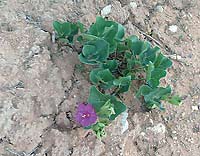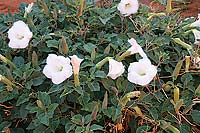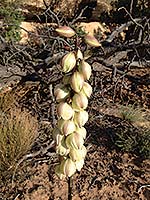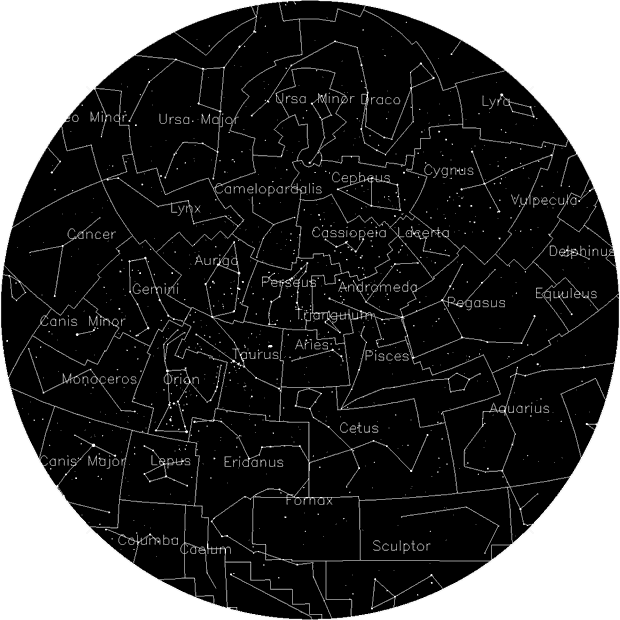Moab
UT (at City Hall)
38O34’ N Latitude 109O33’ W Longitude
4048 ft - 1234 m |
DARK SKY HAPPENINGS - August 2018
Moab Dark Skies mission is to promote the appreciation and conservation of Moab’s valuable and rare dark skies. The Moab Dark Skies was established by the Friends of Arches and Canyonlands Parks in conjunction with the National Park Service and Utah State Parks Division of Natural Resources.
Flowers of the Night
by Hannah Russell
Sunrise-Sunset
for August
(The time of sunrise and sunset assumes a flat horizon. Actual time may vary depending upon the landscape.) |
DATE |
SUNRISE |
SUNSET |
1 |
6:20 am |
8:28 pm |
2 |
6:21 am |
8:27 pm |
3 |
6:22 am |
8:25 pm |
4 |
6:23 am |
8:24 pm |
5 |
6:24: am |
8:23 pm |
6 |
6:25 am |
8:22 pm |
7 |
6:26 am |
8:21 pm |
8 |
6:27 am |
8:20 pm |
9 |
6:27 am |
8:19 pm |
10 |
6:28 am |
8:17 pm |
11 |
6:29 am |
8:16 pm |
12 |
6:30 am |
8:15 pm |
13 |
6:31 am |
8:14 pm |
14 |
6:32 am |
8:12 pm |
15 |
6:33 am |
8:11 pm |
16 |
6:34 am |
8:10 pm |
17 |
6:35 am |
8:09 pm |
18 |
6:35 am |
8:07 pm |
19 |
6:36 am |
8:06 pm |
20 |
6:37 am |
8:04 pm |
21 |
6:38 am |
8:03 pm |
22 |
6:39 am |
8:02 pm |
23 |
6:40 am |
8:00 pm |
24 |
6:41 am |
7:59 pm |
25 |
6:42 am |
7:57 pm |
26 |
6:43 am |
7:56 pm |
27 |
6:43 am |
7:54 pm |
28 |
6:44 am |
7:53 pm |
29 |
6:45 am |
7:51 pm |
30 |
6:46 am |
7:50 pm |
31 |
6:47 am |
7:48 pm |
|
 Nighttime in the deserts of the southwest is abloom. Generally, we think of our spectacular wildflowers in the late spring and early summer. There are, however, quite a few species of native wildflowers still blooming at night! Showy Four O’Clock and Trailing Four O’Clock are vibrant low growing pink and purple flowers that open late in the afternoon. At night, they release a musky sent to attract nighttime pollinators. By morning, the flowers close-up again. Nighttime in the deserts of the southwest is abloom. Generally, we think of our spectacular wildflowers in the late spring and early summer. There are, however, quite a few species of native wildflowers still blooming at night! Showy Four O’Clock and Trailing Four O’Clock are vibrant low growing pink and purple flowers that open late in the afternoon. At night, they release a musky sent to attract nighttime pollinators. By morning, the flowers close-up again.
Southeast Utah is home to numerous evening primrose species which are delicate,  mid-sized flowers. These include Bridges Evening Primrose and Lavender Evening Primrose, which bloom yellow, Dwarf Evening Primrose which blooms white and then turns pink once pollinated, and the Pale Evening Primrose, which blooms white. Evening primroses typically bloom only for a single night during which time they are pollinated, and then wither by morning. mid-sized flowers. These include Bridges Evening Primrose and Lavender Evening Primrose, which bloom yellow, Dwarf Evening Primrose which blooms white and then turns pink once pollinated, and the Pale Evening Primrose, which blooms white. Evening primroses typically bloom only for a single night during which time they are pollinated, and then wither by morning.
Perhaps one of the most well-known local nighttime bloomers is the Sacred Datura or Moonflower. Sacred Datura is a large white to purple hued trumpet flower that blooms at night, emits a pleasant odor, and withers by midday. All parts of Sacred Datura are poisonous but the plant has been used by Indigenous peoples as a hallucinogen and analgesic.
 Numerous yucca species including the Datil Yucca and the Harriman’s Yucca thrive in Southeast Utah. Yucca flowers are white to cream colored, bell shaped, and grow from a central stock. Yucca have a special symbiotic relationship to yucca moth. Yucca are specially cross-pollinated by the short-lived yucca moth that only feed on and pollinate yucca. Numerous yucca species including the Datil Yucca and the Harriman’s Yucca thrive in Southeast Utah. Yucca flowers are white to cream colored, bell shaped, and grow from a central stock. Yucca have a special symbiotic relationship to yucca moth. Yucca are specially cross-pollinated by the short-lived yucca moth that only feed on and pollinate yucca.
Nighttime pollinators play a vital part in the desert ecosystem, and in particular for the propagation of nighttime flowering plants. In addition to the yucca moth, other vital nighttime pollinators include hawk moths and bats. While the number of nighttime pollinators are few, research has shown that they are extremely effective and prolific pollinators. Research has also shown that artificial nighttime light can adversely affect nighttime pollinators. Our dark skies make for an excellent environment for nighttime pollinators and a prolific nighttime garden.
. |
 Nighttime in the deserts of the southwest is abloom. Generally, we think of our spectacular wildflowers in the late spring and early summer. There are, however, quite a few species of native wildflowers still blooming at night! Showy Four O’Clock and Trailing Four O’Clock are vibrant low growing pink and purple flowers that open late in the afternoon. At night, they release a musky sent to attract nighttime pollinators. By morning, the flowers close-up again.
Nighttime in the deserts of the southwest is abloom. Generally, we think of our spectacular wildflowers in the late spring and early summer. There are, however, quite a few species of native wildflowers still blooming at night! Showy Four O’Clock and Trailing Four O’Clock are vibrant low growing pink and purple flowers that open late in the afternoon. At night, they release a musky sent to attract nighttime pollinators. By morning, the flowers close-up again.  mid-sized flowers. These include Bridges Evening Primrose and Lavender Evening Primrose, which bloom yellow, Dwarf Evening Primrose which blooms white and then turns pink once pollinated, and the Pale Evening Primrose, which blooms white. Evening primroses typically bloom only for a single night during which time they are pollinated, and then wither by morning.
mid-sized flowers. These include Bridges Evening Primrose and Lavender Evening Primrose, which bloom yellow, Dwarf Evening Primrose which blooms white and then turns pink once pollinated, and the Pale Evening Primrose, which blooms white. Evening primroses typically bloom only for a single night during which time they are pollinated, and then wither by morning.  Numerous yucca species including the Datil Yucca and the Harriman’s Yucca thrive in Southeast Utah. Yucca flowers are white to cream colored, bell shaped, and grow from a central stock. Yucca have a special symbiotic relationship to yucca moth. Yucca are specially cross-pollinated by the short-lived yucca moth that only feed on and pollinate yucca.
Numerous yucca species including the Datil Yucca and the Harriman’s Yucca thrive in Southeast Utah. Yucca flowers are white to cream colored, bell shaped, and grow from a central stock. Yucca have a special symbiotic relationship to yucca moth. Yucca are specially cross-pollinated by the short-lived yucca moth that only feed on and pollinate yucca. 